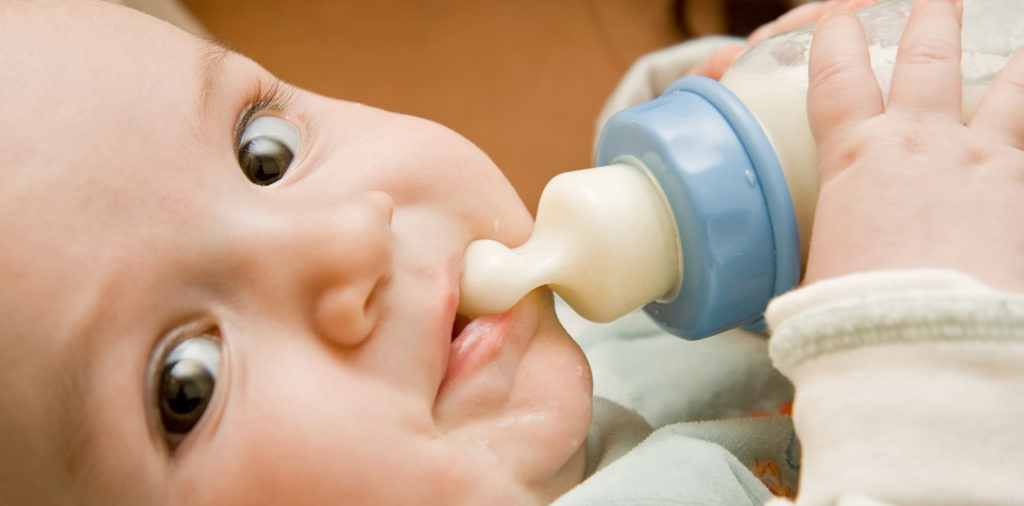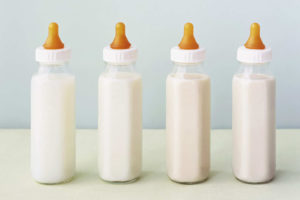
The DFW Hospital Council is posting blogs submitted by our Associate Members. The following was provided by Gerber. For guidelines, please contact Chris Wilson at chrisw@dfwhc.org.

There are more bacterial cells in our body than human cells. In fact, the human microbiota is made up of trillions of cells, and they outnumber our own cells tenfold. The biggest populations of microbes reside in our gut – the gut microbiota – and each of us harbors anywhere between 10 trillion and 100 trillion microbial cells; all of the genes inside these microbial cells are what constitute our microbiome. Thus, keeping a healthy balance of good bacteria in our microbiota is an important factor for our health.
The composition of our gut microbiota is affected by many factors, and influenced by early exposure to microbes– for instance, our genetics, whether we are breastfed or formula-fed, if we are delivered vaginally or by caesareansection, our environment, and our diet. Breastmilk, which is the best way to nourish an infant, is a natural source of good bacteria and other factors that help support the developing microbiota. Breastfed infants have a predominance of good bacteria, such as bifidobacteria and lactobacilli.
Benefits of a balanced gut microbiota have increased interest in probiotics. Probiotics are non-pathogenic, live microorganisms in the food supply that, when consumed or ingested in adequate amounts, are capable of conferring a health benefit to the host. The basic characteristics of a probiotic include that it:
• Is a microbial organism;
• Remains viable and stable during use and storage prior to consumption;
• Is able to induce a host response as part of the intestinal ecosystem;
• Is beneficial to the host when consumed.

Another characteristic of probiotics is that they transiently colonize in the gut. Therefore, they should be consumed in adequate amounts each day in order to provide a continued benefit to the host.
Humans have consumed bacteria and yeasts with probiotic characteristics for hundreds of years. Different probiotics have different benefits, which are genus, species, and strain specific.
Bifidobacteria and Lactobacilli are among the most predominant genera of bacteria in breastmilk, and have been extensively studied.
Among these genera, Lactobacillus reuteri (L. reuteri), strain DSM 17 938 and Bifidobacterium lactis (B.lactis), strain Bb-12 are two probiotic bacteria (among others) that have been well-researched in infants and children. Both probiotics, B.lactis and L. reuteri, are GRAS (Generally Regarded as Safe) for use in infant formula for healthy infants from birth.
Both B. lactis, strain Bb12, and L. reuteri, strain DSM 17 938, have been shown to help support a balanced microbiota and promote digestive health.9-11 B.lactis has also been shown to support the developing immune system by increasing key antibodies in formula fed infants,9 and a large body of evidence has shown L. reuteri is successful in reducing crying time in colicky breastfed infants.
The exponentially growing body of scientific evidence continues to explore new ways in which probiotics can be used to promote long term health.
References:
1. Hsieh M. Versalovic J. Curr Probl Pediatr Adolesc Health Care. 2008; 38(10):309-327.
2. Tannock GW. In: Hanson LA, Yolken R, eds.. Lippincott-Raven 1999:17–32.
3. Madan JC et al. JAMA Pediatr. 2016;170(3):212-219.
4. Gibson GR, In: Fuller R, ed. Probiotics 2: Chapman & Hall 1997:10–39.
5. FAO/WHO. 10-1-2001. 2001.
6. Saavedra JM. Am J Clin Nutr 2001;73:1147S–1151.
7. Bennet R, Acta Paediatr 1992;81:784–7.
8. Thomas D, et al. Pediatrics. 2010;128(6):1217-1231.
9. Holscher H. J Parenter Enteral Nutr. 2012;36:106S-17S 2012
10. Langhendries JP. J Pediatr Gastroenterol Nutr. 1995; 21(2):177-181
11. Savino F, et al. Pediatrics 2010; 126(3):e526-33.
12. Szjaewska H. J Pediatr. 2013 Feb;162(2):257-62.
13. Chau J Peds 2015 http://dx.doi.org/10.1016/j.jpeds.2014.09.020
Gerber – Probiotics: the importance of good bacteria in promoting health
02/20/2018